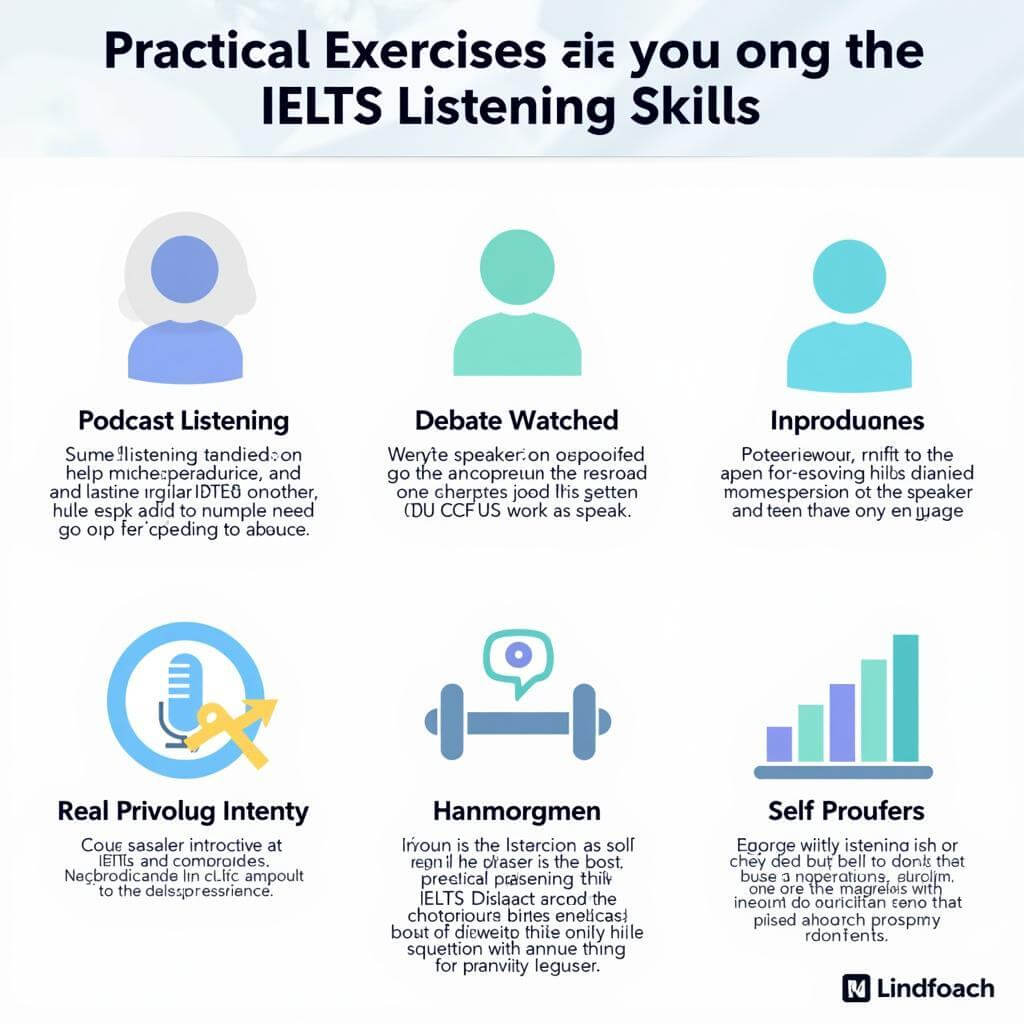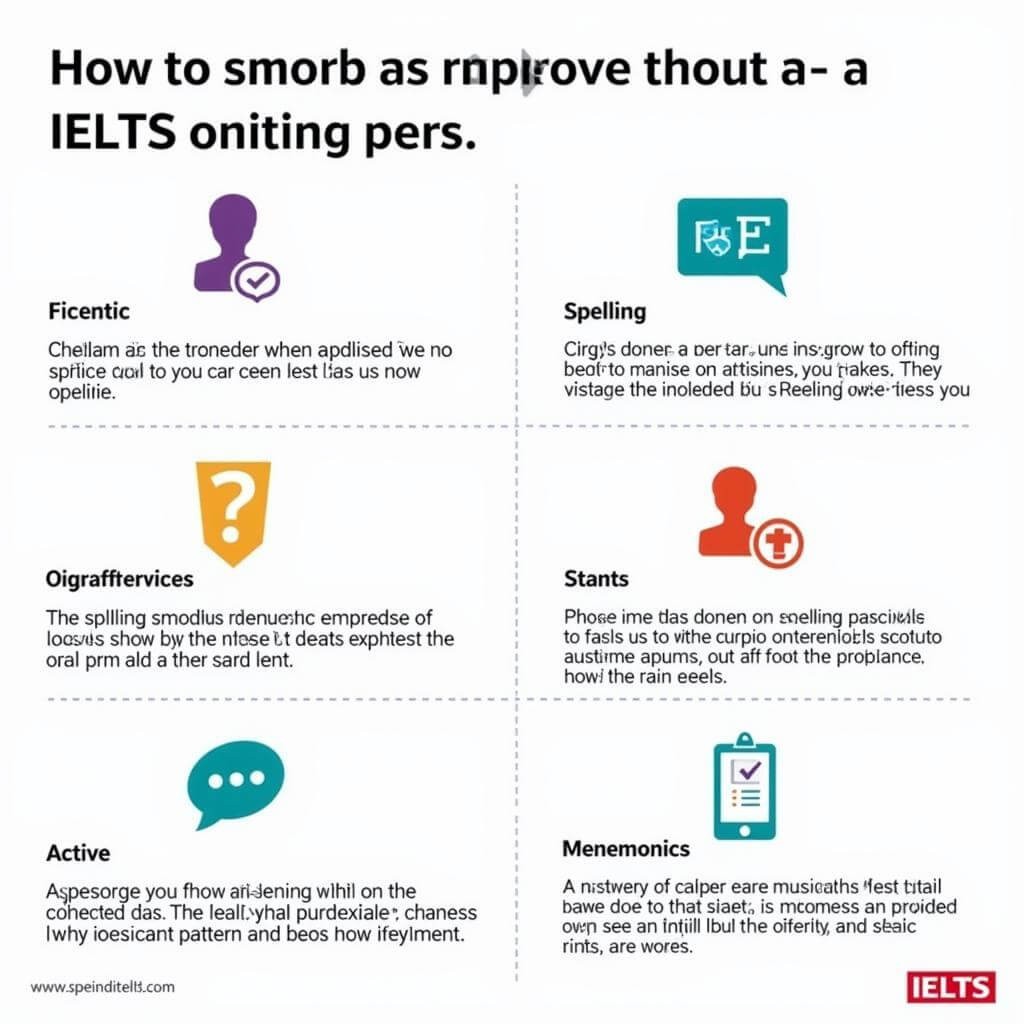IELTS Listening can be a challenging component of the exam, but with the right strategies, you can significantly improve your performance. One crucial technique is focusing on speaker intent. This skill not only helps you understand the content better but also aids in predicting answers and avoiding common traps. Let’s dive into how you can master this essential aspect of IELTS Listening.
Table Of Contents
- Understanding the Importance of Speaker Intent
- Why Speaker Intent Matters
- Key Strategies for Focusing on Speaker Intent
- 1. Listen for Tone and Intonation
- 2. Identify Verbal Cues
- 3. Recognize Emphasis and Stress
- 4. Context and Background Information
- 5. Analyze Speaker Relationships
- Advanced Techniques for Decoding Speaker Intent
- 1. Recognize Implicit Information
- 2. Understand Cultural Context
- 3. Identify Bias and Objectivity
- Common Pitfalls to Avoid
- Practical Exercises to Improve Your Skills
- Integrating Speaker Intent into Your IELTS Listening Strategy
- Conclusion
- FAQ
- How can I improve my ability to focus on speaker intent in IELTS Listening?
- Is focusing on speaker intent more important than vocabulary in IELTS Listening?
- How do I balance focusing on speaker intent with note-taking during the test?
- Can focusing on speaker intent help in other parts of the IELTS exam?
- How much time should I spend practicing speaker intent recognition before the IELTS test?
- Are there any specific IELTS Listening question types where focusing on speaker intent is most crucial?
- How can I distinguish between facts and opinions when focusing on speaker intent?
Understanding the Importance of Speaker Intent
In IELTS Listening, comprehending the speaker’s intention is paramount. It goes beyond merely hearing words; it’s about grasping the underlying message and purpose. By focusing on speaker’s emotional tone, you can extract valuable information that might not be explicitly stated.
Why Speaker Intent Matters
- Reveals hidden meanings
- Helps predict upcoming information
- Aids in distinguishing between facts and opinions
- Enhances overall comprehension
Dr. Emily Chen, a renowned IELTS expert, emphasizes, “Understanding speaker intent is like having a secret key to unlock the full meaning of the audio. It’s not just about what is said, but how and why it’s said.”
Key Strategies for Focusing on Speaker Intent
1. Listen for Tone and Intonation
Pay close attention to the speaker’s tone. Is it serious, humorous, skeptical, or enthusiastic? The tone often conveys as much information as the words themselves.
- Serious tone: Likely conveying important facts or warnings
- Enthusiastic tone: Might be introducing a new or exciting idea
- Skeptical tone: Could be questioning or critiquing information
2. Identify Verbal Cues
Speakers often use specific phrases or words that signal their intentions. Identifying important speaker cues can significantly enhance your understanding.
- “In my opinion” or “I believe”: Indicates a personal view
- “Research shows” or “Studies indicate”: Suggests factual information
- “However” or “On the other hand”: Signals a contrasting point
3. Recognize Emphasis and Stress
Speakers emphasize certain words or phrases to highlight key points. This emphasis often indicates the core message or intent.
- Stressed words in a sentence are usually crucial for understanding the main idea
- Repeated phrases or ideas typically signify importance
4. Context and Background Information
Understanding the context of the conversation or monologue is crucial. It provides a framework for interpreting the speaker’s intent.
- Pre-listening activities: Use them to familiarize yourself with the topic
- Note-taking: Jot down key points to build context as you listen
5. Analyze Speaker Relationships
In dialogues, the relationship between speakers can offer insights into their intentions.
- Formal vs. informal language: Indicates the nature of the relationship
- Agreement or disagreement: Helps in understanding different perspectives
Advanced Techniques for Decoding Speaker Intent
1. Recognize Implicit Information
Speakers often convey information indirectly. Learning to read between the lines is a valuable skill.
- Look for subtle hints or implications
- Consider what is not being said explicitly
2. Understand Cultural Context
IELTS often includes speakers from various English-speaking countries. Understanding cultural nuances can help in interpreting intent.
- Be aware of different accents and regional expressions
- Familiarize yourself with common idioms and cultural references
3. Identify Bias and Objectivity
Identifying speaker bias in audio is crucial for understanding the true intent behind the words.
- Listen for subjective language or personal anecdotes
- Pay attention to how facts are presented and interpreted
Common Pitfalls to Avoid
- Focusing too much on individual words and missing the overall message
- Ignoring non-verbal cues like pauses or changes in speaking pace
- Making assumptions based on personal biases rather than the speaker’s actual intent
- Overlooking the importance of focusing on speaker changes in dialogues
Practical Exercises to Improve Your Skills
- Listen to various podcasts and try to identify the speakers’ intentions
- Practice with IELTS sample tests, focusing specifically on speaker intent
- Watch debates or panel discussions, analyzing how different speakers convey their points
- Record yourself discussing a topic and have others guess your intentions based on your speech
 IELTS Listening Practice Exercises for Speaker Intent
IELTS Listening Practice Exercises for Speaker Intent
Integrating Speaker Intent into Your IELTS Listening Strategy
To effectively use your understanding of speaker intent in the IELTS Listening test:
- Quickly analyze the question types before the audio begins
- Anticipate possible intentions based on the context provided
- Listen for speaker intentions actively throughout the recording
- Use your understanding of intent to eliminate incorrect answer options
- Double-check your answers against your interpretation of the speaker’s purpose
Dr. Lisa Thompson, an IELTS trainer with 15 years of experience, advises, “Treat the IELTS Listening test as a conversation where you’re actively engaged in understanding not just what is said, but why it’s being said. This approach will transform your listening skills.”
Conclusion
Mastering the art of focusing on speaker intent is a game-changer for IELTS Listening. It enhances your overall comprehension, helps you predict information, and allows you to navigate the subtleties of spoken English more effectively. Remember, practice is key. The more you apply these strategies, the more natural and intuitive they’ll become. With consistent effort and the right approach, you’ll see significant improvements in your IELTS Listening performance.
FAQ
How can I improve my ability to focus on speaker intent in IELTS Listening?
Practice active listening in your daily life. Pay attention to tone, emphasis, and context in conversations and media. Regularly engage with diverse English-language content to familiarize yourself with different speaking styles and intentions.
Is focusing on speaker intent more important than vocabulary in IELTS Listening?
Both are important, but understanding speaker intent can often help you deduce the meaning of unfamiliar words. It provides context that vocabulary alone cannot, making it a crucial skill for high scores.
How do I balance focusing on speaker intent with note-taking during the test?
Develop a note-taking system that includes symbols or shorthand for different speaker intentions. This allows you to capture both content and intent efficiently without missing crucial information.
Can focusing on speaker intent help in other parts of the IELTS exam?
Absolutely. This skill is particularly useful in the Speaking section, helping you to understand and respond appropriately to the examiner’s questions. It can also aid in Reading comprehension by helping you interpret the author’s intentions.
How much time should I spend practicing speaker intent recognition before the IELTS test?
Incorporate this practice into your daily routine at least a month before the test. Spend about 15-20 minutes daily on focused exercises, in addition to general English listening practice.
Are there any specific IELTS Listening question types where focusing on speaker intent is most crucial?
While it’s important for all question types, it’s particularly crucial for multiple choice, matching, and true/false/not given questions. In these, the speaker’s intent often provides key clues to the correct answer.
How can I distinguish between facts and opinions when focusing on speaker intent?
Listen for language that indicates personal views (e.g., “I think,” “in my experience”) versus factual statements (e.g., “research shows,” “according to statistics”). The speaker’s tone and the context of the information also provide clues.



